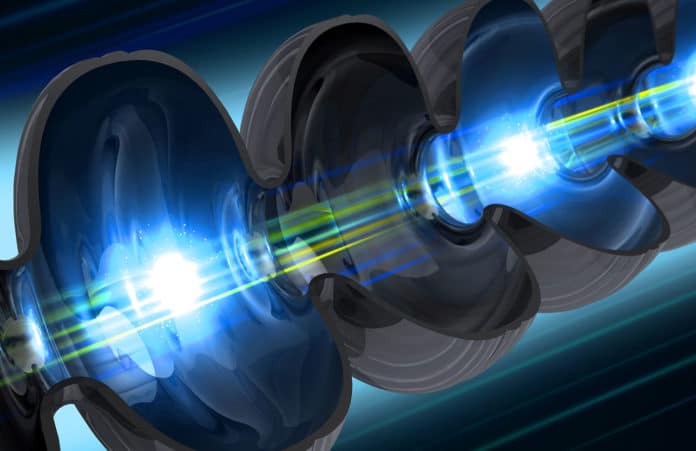Scientists at SLAC National Accelerator Laboratory are putting the finishing touches on its Linac Coherent Light Source II, or the LCLS-II, that could fundamentally change the way they study the building blocks of the universe.
Once it becomes operational, the LCLS-II will be the second world-class X-ray laser at the U.S. Department of Energy’s (DOE) SLAC National Accelerator Laboratory.
The first LCLS, which has been in operation since 2009, can create a beam capable of 120 light pulses a second. However, the LCLS-II crushes this record by being able to up to 1 million pulses per second. The new capabilities of LCLS-II will yield a host of discoveries to advance technology, new energy solutions, and our quality of life.
The new X-ray laser will work in parallel with the existing one, with each occupying one-third of SLAC’s 2-mile-long linear accelerator tunnel. Both LCLS and LCLS-II will use electrons accelerated to nearly the speed of light to generate extremely bright X-ray laser light beams. The electrons fly through a series of alternating magnets, called an undulator, which forces them to travel a zigzag path and give off energy in the form of X-rays. But the way those electrons are accelerated will be quite different and give LCLS-II many different capabilities. At present, electrons are accelerated down a copper pipe that operates at room temperature and allows the generation of 120 X-ray laser pulses per second.
The LCLS-II is being built in a facility thirty feet underground near Stanford University. For LCLS-II, crews will install a superconducting accelerator. It’s called “superconducting” because its niobium metal cavities conduct electricity with nearly zero loss when chilled to minus 456 degrees Fahrenheit. Accelerating electrons through a series of these cavities allows the generation of an almost continuous X-ray laser beam with pulses that are 10,000 times brighter, on average, than those of LCLS and arrive up to a million times per second, or a pulse below a femtosecond.
In addition to the new accelerator, LCLS-II requires a number of other cutting-edge components, including a new electron source, a powerful cooling plant that produces refrigerant for the accelerator, and two new undulators to generate X-rays.
With this never-seen-before pulsating ability, scientists will be able to carry out experiments that were classified as impossible to perform until recently. SLAC scientists hope to produce their first electron beam with the LCLS-II this month, followed by their first X-ray in the summer, which they’ll refer to as their first “big light” event.
